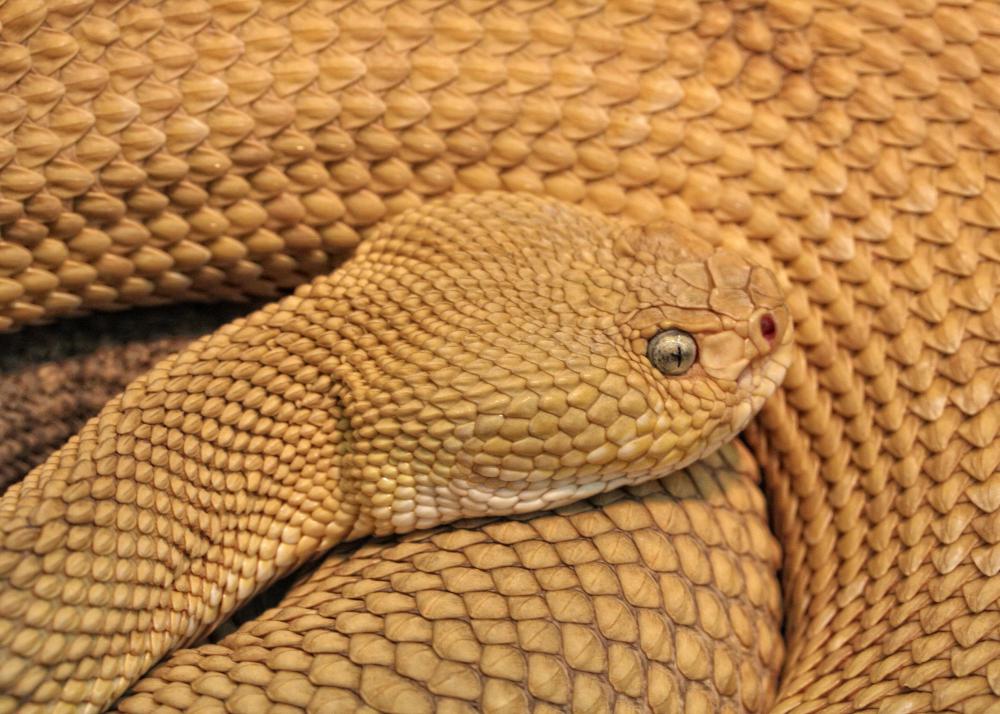At WiseGEEK, we're committed to delivering accurate, trustworthy information. Our expert-authored content is rigorously fact-checked and sourced from credible authorities. Discover how we uphold the highest standards in providing you with reliable knowledge.
What are the Best Tips for Snake Bite First Aid?
The best tips for snake bite first aid are typically the same whether a person was bitten by a poisonous or non-poisonous snake. Initially, the first thing that should be done is to calm down and reassure the bitten person, because panic can actually cause any venom that was injected to spread faster through the bloodstream. It's also a good idea for a person to try to get a good look at the snake that did the biting. If a doctor knows what kind of snake a person was bitten by, she can better determine what type of antidote should be used to treat the bite. Another beneficial snake bite first aid tip is to remove any tight clothing that may be covering the bite, because the area will probably swell up.
No matter what kind of snake a person was bitten by, medical help should still be called for as soon as possible. While a person is waiting for help, he can attempt to clean the wound with soapy water and cover it with a bandage. It is also recommended that the bitten person keep the wounded area below her heart because this may help to slow the spreading of any venom inside her bloodstream. The bitten person should also try to avoid moving the bitten area until medical help arrives.

Many people make mistakes when attempting snake bite first aid. Some people believe that it is necessary to tie a tourniquet above the wounded area to keep the poison from spreading, but this could actually cut off the circulation of the bitten person. It is typically acceptable to tie a bandage above the bitten area, but it should be loose enough that someone can easily fit a finger underneath it. Other things that should generally never be done when practicing snake bite first aid are cutting the wound to drain the venom out or sucking the venom out by mouth. Cutting the wound is not often very effective and might leave the person with unsightly scarring, and a person who tries to suck the venom out by mouth could end up poisoned herself.

It's a good idea for a person to keep a snake bite first aid kit on hand, particularly if he spends lots of time outdoors. These kits normally come with everything needed to clean and dress a snake bite wound. The kits usually have a small device that can help to suction out the venom, but these should not typically be used unless it will take a long time for medical help to arrive. Snakes generally try to avoid people and may only strike when they feel threatened. A person who spends lots of time in snake-infested areas should be careful to avoid tall grass and other areas where snakes are often found.
AS FEATURED ON:
AS FEATURED ON:














Discussion Comments
In the U.S., most venomous snakebites are treated with Cro-Fab antivenin, since three of the four venomous snakes are pit vipers, and are responsible for 99.999 percent of the snakebites reported in that country. Coral snakes, while venomous, are elapids, and have a different kind of venom. Fortunately, coral snake bites are extremely rare, even in regions where the snake is more common.
In regions where elapid bites are more common, the compression bandage method of first aid is the preferred treatment. Because pit viper venom can have such a necrotizing effect on skin, some doctors hesitate to recommend it, but it has been used effectively for some cases.
Definitely, get any constricting clothing away from the limb where the bite is, and keep it at a level lower than the heart. In the U.S., if you see the snake, fine, but since the antivenin is the same for most snakes, identification is not as critical, unless you're in the desert and the bite was from a Mojave rattler. They have a complex venom and the doctor will want to know he or she is dealing with a possible Mojave bite. With any luck, you will have a dry bite, with no venom injected.
Post your comments